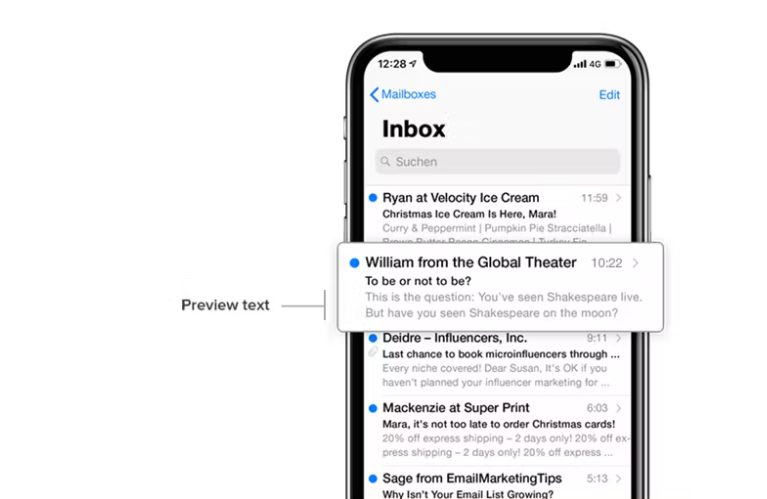The relationship between PRs and journalists has often been a bit strained.
Journalists have often complained about being spammed by emails and inundated with calls.
PRs and comms teams, on the other hand, often feel journalists ignore their story ideas and press releases.
There have been many surveys about what hacks and flacks think of each other.
But less has been said about improving the relationship. And how to do that when newsroom resources are diminishing and there are now six press officers for every journalist.
Members of The Media Team Academy took part yesterday in a masterclass with Emma Nelson, one of our current working journalist tutors.
Emma, a broadcast journalist for the BBC London and Monocle 24, among others, shared her thoughts about improving relationships between PRs and journalists and how to produce press releases that capture interest and generate coverage.
And we thought we would share some of her tips and advice in our media training blog.
How the media landscape has changed
Emma began by exploring how covid had changed newsrooms.
During the pandemic, there was a seven per cent occupancy at the BBC in London.
Emma says that number has since gone up as restrictions have eased. But, instead of returning to normal levels, a hybrid working system is now in place.
“In the olden days, we would all clatter into town to get to the morning meeting at 9am, where we would sit around, discuss stuff and get on with our day,” she said.
“For people who don’t have a direct role in that meeting, there is no point in getting on a train, The Tube or in a car to go to central London for a 9am meeting.
“So, now I join the morning meeting from Zoom. And, as a result, I think we lack that serendipity where you are talking about a transport story, for example, and someone says ‘I interviewed someone a while ago’ or ‘I’ve just been sent this press release from such and such a company and I think they might be useful’.
“It is a much more transactional experience, and that ability to discuss, explore and build on the ideas that are sent to us is much more limited.”
What does this mean for PRs and comms teams?
“I need the press releases that are sent through to be spot on so that we can act on it efficiently,” Emma said. “We also have a much more predictable day because there are fewer resources. The idea of being able to travel all over London to find things has long gone.
“If you are doing a pitch, can you make sure that everything we need is in one place? If not, can you offer us someone over Zoom?”
So, what should go into a press release and what makes a good story?
TRUTH
If you have been on one of our media training courses, you will be familiar with the TRUTH test we use to explain what makes something newsworthy.
Topical: If there is something in the news that you can contribute to, we will snap that up,” Emma said. “When the Ukrainian war broke out, we went to a Ukrainian church and it helped us to illustrate what is happening there. If you are a pharmaceutical company that makes sun cream, the sun coming out is topical. The topicality needs to be at the front and centre of what you are saying. It also helps to explain why we come to you for comments on particular stories.”
Relevant: “The secret to this is you are not talking to a journalist when you are talking to them - you are talking to their audience,” Emma said. “When your spokesperson is giving an interview, they are not talking to me, they are talking to my listeners. You have to leapfrog me, and I don’t mind that because I am asking questions on behalf of my audience. So, when you are pitching, please make it relevant. Otherwise, it is not going to help us.
Unusual: “If you do something unusually well, or unusually badly, we are going to be interested in you,” said Emma. “We love firsts, lasts and extremes. I don’t want to hear about something vanilla or expected.”
Trouble: “You may not like trouble because it might mean I am phoning your company to find out what has gone wrong,” Emma said. “But there is another way to look at trouble. Journalists are an early warning system. During covid, we told you, from the Government, to stay home and protect lives. But we then also went on to talk about education, women’s rights, health and whether the economy should restart – exploring the risks society was facing. Where you can come in is with the solution. We need problem solvers – can you give us hope?”
Human: “Don’t talk to me about percentages or processes,” Emma said. “Talk to me about people. If you have case studies, and they can make an emotional connection with my audience, you are on to a winner. If you don’t have a human story to tell, it will not fly. I can't tell you how many times I have been approached with a good story, but it doesn’t get covered because there isn’t a case study.”
Emma then went on to discuss how best to structure press releases and the content you should use.
To start this, she shared another acronym that commonly gets used by our expert media trainers when teaching.
With around 35 per cent per cent of the masterclass audience admitting to being in PR for less than two years this would have been invaluable information. And I’m sure it was a welcome refresher for the more experienced on the webinar.
Here are some of her other tips for press releases and pitching:

If you and your team would like to attend live masterclasses classes like this, you need to act fast. The deadline to join the second intake of The Media Team Academy is March 31. As well as the masterclasses, members also have access to our online courses and handpicked learning resources.
Keep it short
Emma told the masterclass delegates that a press release should be between 150 and 200 words and contain a link to something more detailed.
Headline
Come up with a headline for your story that explains what it is and the media may be able to use.
Emma said: “There was a tweet a few days ago from a journalist that sums this up nicely. It said that the headline you come up with may not be the right headline, but it gives us something to work on and saves us time.
I'll say it again but if you're a PR and you're pitching a story to me, PLEASE at least try to come up with a headline. It might not be the right headline. But it's something to work on and can save lots of time. It also tells me whether you HAVE a story. Thank you.
— Jill Foster (@JournalistJill) March 16, 2022
“I want you to put your story in the headline. I can’t tell you how many press releases come to me and it and the headline is just a jumble of words. Make your headline succinct and relevant to my audience.”
Preview Text
But you need to think about more than just the headline to gain that initial interest and stand out in a crowded inbox.
Emma says the first couple of lines that display in the preview part of the email are also crucial.

She said: “If the preview text says something like ‘Dear Emma, I hope you are well?’, then I am going to delete it.
“That is a missed opportunity. Use the preview text to let me know your email contains something interesting and useful.”
Multimedia
You need to think about more than just your text. Images, videos and infographics are also crucial.
They help journalists to see the story.
I think this is more important than ever. We live in a data-driven world. And journalists are no different.
Reach – the owners of the Daily Mirror and many regional titles - has launched a pilot scheme giving reporters minimum page view targets.
Journalists who have been with the company for more than six months will be set minimum benchmarks of between 80,000 and 850,000 page views per month, depending on which publication they write for and their job role.
Newsquest, another publisher of regional newspapers, runs a similar scheme where journalists receive bonuses for exceeding page view targets.
It means newsdesks have to think differently about their stories. Online stories are visual. If you look at the news sites you visit, they almost always include pictures and videos.
So, to catch the interest of a journalist worried about their page view targets, you need to add visuals to your stories.
When to send?
When is the best day to put your press release out?
Research has shown that press releases sent on a Thursday typically perform better. The theory is that journalists are approaching the end of the week, have covered their most pressing stories and finally have a chance to look at that bulging inbox.
Emma said: “I sometimes think sending a press release on a Thursday is the best time. But I now get loads on Thursdays.
“For me, the best time is between 5am and 9am – then I can take the press release into the morning news meeting.
“But I also think there is something to be said about sending press releases on a weekend. There have been many times when I’ve been in on a Saturday or Sunday, and the news cupboard has been bare.”
Ready to go
A trap PRs and comms teams must avoid is gaining the interest of journalists and then not having anyone available to tell the story. The opportunity to gain coverage will quickly disappear.
“You need to be ready to go,” Emma said. “Have your story ready to go. Have your case study ready. Have your spokesperson available on the day you send the press release.
“Tell us where we can park. Give us a glass of water. And think about somewhere interesting we can film – don’t just put your spokesperson in a white room.”
Emma also went on to discuss embargoes, exclusives, pitching and follow ups. The full video of the session will be uploaded to The Media Team Academy members shortly, enabling them to watch all the great tips and advice again.
If your business is not yet signed up to our year-long learning and development programme, then you’re missing out on loads of exclusive content like these masterclasses, access to our online-only courses, handpicked blogs, eBooks and much more. For more details and to apply for a company membership for just £595 + vat click on this link.
And finally
No, not a curveball question you might find at the end of a media interview. But Emma did finish with a plea that is worth repeating.
“Please, please, please meet up with us for coffee," she said. "Take the time out to build relationships with journalists and celebrate that we are in a position where covid is not making us talk to a screen.
“We are desperate to get human stories out there and we are desperate to meet people again.”
Of course, not every journalist will have the same views as Emma. But that’s the benefit of these ‘meet the journalist’ style events and is a good reminder that journalists should be approached as real people with different preferences, story ideas and consequently needs.
This masterclass was part of a series for members of The Media Team Academy. During the year-long learning programme, they will be invited to 12 Media First masterclasses and another six that focus on personal development. If you and your colleagues would like to be part of this, you can find more information here. We are now taking applications for our second cohort, which starts in April.
Media First are media and communications training specialists with over 35 years of experience. We have a team of trainers, each with decades of experience working as journalists, presenters, communications coaches and media trainers.
Subscribe here to be among the first to receive our blog.



